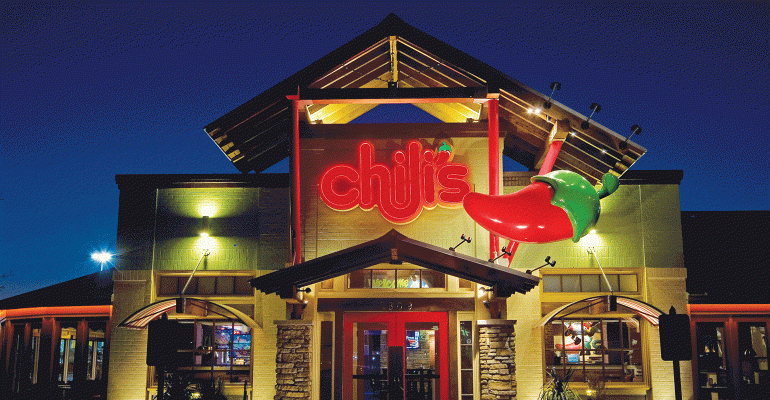Chili’s Grill & Bar’s focused menu execution, which launched when 40% of items were slashed in 2017, has helped the Brinker International Inc. division maintain sales momentum, CEO Wyman Roberts said Wednesday.
With Chili’s same-store sales up 2% in the second quarter ended Dec. 25 and running at about 4% in the current third quarter to date, Roberts said in an earnings conference call, the core menu more narrowly focused on ribs, fajitas, burgers and margaritas increases efficiency. “People have that muscle memory,” he said.
In September 2017, Chili’s slashed its menu by about 40% in order to focus operations and increase traffic.
The menu reduction ran counter to consumer sentiment. “If you ask a consumer, they’ll always want more,” Roberts said. “I mean listen, give me a menu with everything that I could possibly ever want on it. And the challenge with that obviously is executing those items at a high level of consistency with the expertise you need to deliver a great in-restaurant experience.”
Roberts said Chili’s is focused now on bringing “innovation in new news to them [consumers] … to kind of keep them fresh, but to not get caught up in kind of an arms race for new items and new initiatives.”
That is especially noted in the complexity of operations on high-volume Fridays and Saturday nights, Roberts said. “We’ve committed to our operators to only bring them changes to the menu when it really makes a difference,” he noted.
Off-premise transactions at Chili’s also continue to drive sales, Roberts said.
The brand is six months into an exclusive partnership with the DoorDash third-party platform, and the sister Maggiano’s Little Italy is transitioning to exclusive delivery with DoorDash.
Delivery is now “pushing toward 5% of total” sales at Chili’s, said Joe Taylor, Brinker chief financial officer.
“Off-premise sales in the quarter grew in excess of 31% year-over-year,” Taylor said. “Off-premise sales – both to-go and delivery – now represent approximately 17% of total sales.”
Chili’s more than six years ago was among the pioneers in offering tabletop technology for reorders and customer payments.
This quarter, Roberts said, “we began replacing our original tabletop system with a new more advanced system” that is what he called more reliable and offers features like near-field communication to allow for more personal marketing relationships.
Brinker executives said use of the pay-at-the-table function is high, which frees up servers to do other things rather than run checks back and forth. It also allows for loyalty program access.
For the second quarter ended Dec. 25, Brinker’s income, with special charges, was $27.9 million, or 73 cents a share, down from from $32 million, or 83 cents a share, in the same period last year. Revenues rose to $869.3 million from $790.7 million in the prior-year quarter.
While Chili’s same-store sales were up in the quarter, Maggiano’s dipped 1.4% in the period.
Advertising may have helped fuel the 4% quarter-to-date same-store sales increase, Roberts said.
“At the start of January, we got back on the air,” he said, with Chili’s touting its “3 for $10” value message. The “3 for $10” is not offered in the delivery channels
For the second quarter ended Dec. 25, Brinker’s income, with special charges, was $27.9 million, or 73 cents a share, from $32 million, or 83 cents a share, in the same period last year. Revenues rose to $869.3 million from $790.7 million in the prior-year quarter.
As of Dec. 25, Brinker owned, operated or franchised 1,675 restaurants, including 1,622 Chili’s and 53 Maggiano’s.

